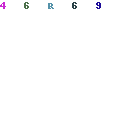Retired SIUE librarians explore the evolution of the book
From the first known pictograph to present-day eBooks, two former SIUE librarians discussed the evolution of the book – and what comes next – last week as part of the College of Arts and Sciences Colloquium.

Charlotte Johnson, a retired SIUE librarian, discussed the evolution of the book as part of the College of Arts and Sciences Colloquium. Photo by Kari Williams
People were predicting the end of books as early as the 1800s, according retired SIUE librarian William Harroff, but from the 1960s to present day, institutions thought books were “the way it’s always going to be.”
“Through technology and a lot of different means [and] thinking about things, we have changed that completely,” Harroff said.
Harroff said now the question is what the “next best container” will look like for books.
“Is it Dr. Who’s sonic screwdriver? … Or are we back at Rocky and Bullwinkle pulling a rabbit out of that magician’s hat?” Harroff said.
For children, there is a move to “read-and-play type story books,” according to retired SIUE librarian Charlotte Johnson.
Pop-up books are also being adapted for the digital age. A pop-up book of “A Christmas Carol” was recently adapted to the iPad and is now interactive, Johnson said.
In addition to books alone, there are also devices in cemeteries that will give \ the exact location of the grave one is looking for.
Johnson said if it does not exist already, there could be the possibility of headstones with QR codes on them to create an “augmented reality story of your life.” Friends and family could listen to a story of the deceased person’s life in the deceased person’s voice.
MIT graduate student Qie Ji created a physical scrapbook that incorporates circuits and stickers, according to Johnson, and also made an electronic scroll.
Michael Hart, founder of Project Gutenberg, looked into desktop publishing and realized that publications were born digital, according to Johnson. However, traditional publishers did not know what type of devices people would read books on.
One of the first eBooks was the Rocket eBook, which was strictly black and white.
“It was like the Tower of Babel…,” Johnson said. “They didn’t know what to publish to.”
Amazon and Sony talked about standards for eBooks, according to Johnson, and a conference was set up to come up with standards that would allow books on any device.
“Once they get a standard, everybody and their brother [will be] coming up with e-read device,” Johnson said.
Filed Under: Uncategorized












